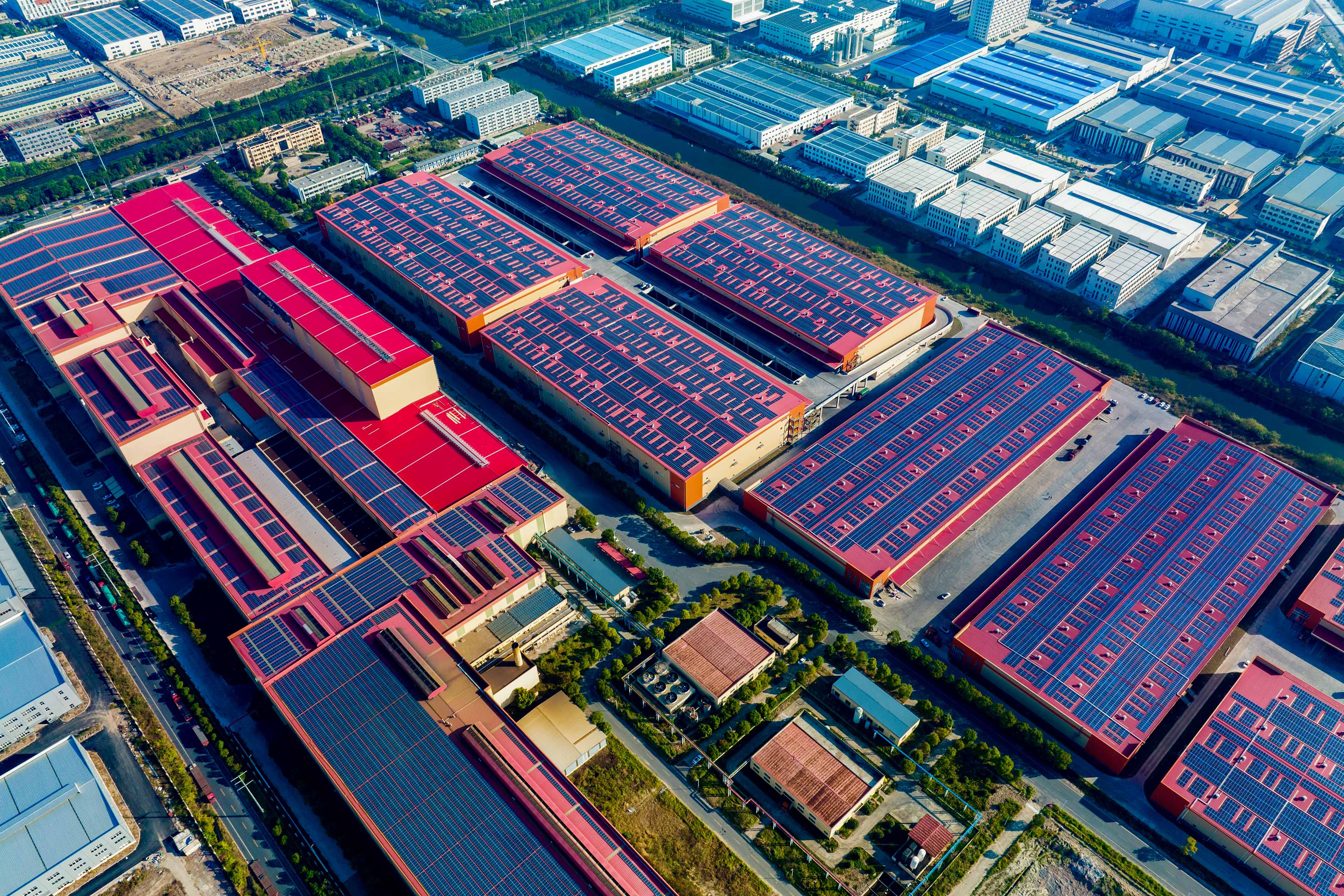EY refers to the global organization, and may refer to one or more, of the member firms of Ernst & Young Global Limited, each of which is a separate legal entity. Ernst & Young Global Limited, a UK company limited by guarantee, does not provide services to clients.

A condition-based asset management program can reduce operating costs while simultaneously achieving sustainability objectives.
In brief
- Sustainability is required for an organization to succeed in today’s modern world.
- Sustainable maintenance practices help maximize an asset’s lifecycle and reduce costs, mitigate risks, and increase employee retention.
Sustainability is more than just a marketing buzzword – it should be at the core of your operations strategy. Over the last decade, corporations have dabbled in sustainability to impact clean air initiatives, to recycle and to contribute to environmentally conscious causes – with little or no quantifiable value. Today, regulatory requirements, social pressure and advanced technology have converged to elevate the importance of sustainability in driving value for the entire organization.
Is sustainability at the core of your operational strategy? Sustainability objectives should be at the forefront of your operational strategy and at the core of all change initiatives. By putting sustainability at the heart of your strategy, your organization can continue to drive improvements that bolster employee and customer loyalty and deliver value.
EY research shows that sustainability can be difficult to embed and implement in an organization without a structured and methodical approach. It is essential for maintenance departments to incorporate sustainability objectives into their asset management strategies. Such strategies should be data-based and focus not only on operational capabilities but also on how to improve overall asset efficiency throughout the production process.
At its core, a sustainable maintenance operation balances profitability, equipment downtime, loss and incident prevention, and value extraction from its tangible assets. An operation that embeds sustainability in its core is not reactive. It enables employees and contractors to focus on prioritized activities rather than following a scheduled to-do list that lacks context or consideration for waste, safety and efficient wrench time.
Today, organizations often struggle with workers who don’t stick around for their entire career, making employee retention a challenging task. Attracting employees for the long haul requires a significant investment in order to maintain a sustainable operation and reduce knowledge gaps, onboarding costs and competitor hiring.
A shared vision and approach
Operations and maintenance need to work together to strike a balance between sustainable maintenance practices and all-out production. It is no longer in the corporate interest, nor that of their operators, to pursue all-out output without regard for the lifecycle of assets and their impact on the environment and people.
It is critical to recognize key challenges and, regardless of the maturity level of organizations, invest in a more sustainability-focused approach that yields productivity gains and efficiencies and improves market recognition. This means investing in technology, hardware, software and equipment across the operation that supports sustainability-driven goals.
To determine sustainable opportunities for critical assets, organizations can:
- Leverage inspection and calibration methods
- Utilize Internet of Things (IoT) and artificial intelligence (AI)
- Utilize visual inspection technology
- Utilize active continuous improvement (CI) activities
- Seek to reduce waste in both the production process throughout the supply chain material and packaging
- Introduce related elements to predictive failure programs, including ESG incidents and reportable status for ESG tracking
Today, companies are reimagining their processes with alternative approaches that align with their sustainability goals when it comes to producing the same or new high-quality products. They are looking for ways to eliminate excess by-products, hazardous waste, unsafe conditions for employees and contractors, and emissions that harm the environment while still meeting their production and profitability targets.
Sustainability in action
Efforts to make your maintenance strategy more sustainable should begin with a clear understanding of equipment and its interoperability across production units and production lines. From here, operations leaders can understand where equipment may produce hazardous waste, excess by-products, unsafe conditions and downtime.
Smart maintenance is the proper application of maintenance strategy, tools and resources to efficiently execute necessary maintenance and reduce maintenance costs, environmental events and employee burnout. Organizations can redirect wrench time to address priority needs without losing sight of scheduled activities before significant incidents occur and people and the environment are compromised.
Continuous improvement regimens can help spur cost efficiencies, reduce direct and indirect waste and emissions, and enable pilot sustainability-related programs. Leaders should discuss leading and lagging KPIs that matter today to monitor operational capabilities and continuous improvement in alignment with sustainability.
It’s critical to align on standards and implement internationally recognized standards that align company policies with asset and work management procedures. Shifting from time-based monitoring to continuous monitoring enables the organization to track and recognize performance trends that can impact corporate sustainability commitments and help reduce overall operational costs, thus increasing profits.
Many businesses are leveraging technology to improve productivity, and many have employed IoT and other proactive/predictive methods to achieve operational gains. The use of software platforms that incorporate digital twins for planning and risk mitigation, along with wireless solid-state sensors, now make continuous monitoring solutions affordable and cost-effective.
Making sustainability a reality
The use of modern equipment and technologies in maintenance strategies is vital for replacing reactive or time-/counter-based maintenance strategies with condition monitoring or a condition-based maintenance strategy. For instance, a strategy that utilizes digital twin, AI, IoT and solid-state wireless sensors to enable continuous monitoring and analysis allows maintenance organizations to tailor and better manage, in near real time, asset management programs.
When it comes to maintenance sustainability, an organization that can incorporate data and modern technology to better understand the current operating condition of its assets can minimize the inefficiencies of operation and maintenance as well as make better decisions about when to replace those assets that no longer perform adequately. Additionally, efficiency gains may help departments deal with attrition — a common problem among maintenance departments dealing with older workers retiring and insufficient recruitment of replacements.
The more that is known about a company’s equipment, the less time, replacement parts and wrench time will be spent on it, thus reducing the overall environmental footprint and chances for unplanned downtime, capacity degradations, and quality or safety events. Organizations that can demonstrate how they operate in harmony with sustainable supply chains and operations will position themselves as market leaders.
Jay Ratliff, Senior Manager, Ernst & Young LLP, and Jaime Porto, Manager Ernst & Young LLP, also contributed to developing this article.
Summary
Sustainability is a required business objective in today’s culture. Sustainable asset management and maintenance practices can decrease operating costs and create efficient, profitable organizations.
Related articles
How Cox Enterprises is shaping its sustainable supply chain
Clarence Jackson of Cox Enterprises explains how a company that relies heavily on contractors still makes a positive environmental impact. Learn more.
Three ways to turn atmospheric carbon removal from a cost to a revenue generator
Companies can meet carbon-reduction goals and use captured carbon dioxide (CO2) to make products ranging from aviation fuels to cosmetics. Learn more.
How sustainable supply chains are driving business transformation
2022 EY research examines supply chain sustainability practices, KPIs and return on investment across the Western Hemisphere. Find out more.
How EY can help
-
Optimize operations with Ernst & Young LLP Supply Chain consulting services. Use tech and AI to boost resilience, efficiency and value.
Read more






